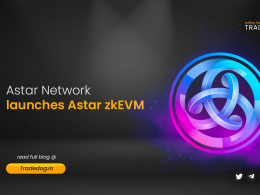Quick Links
Imagine you have a piggy bank, but instead of putting it on your shelf, you lock it in a safe where it’s super secure. Offline staking is like that but for cryptocurrencies. You promise not to spend some of your digital money for a while by locking it up in a special digital safe (a wallet that doesn’t need to be connected to the internet). Because you’re helping to keep the digital money network safe and running smoothly by doing this, the network rewards you with a bit more digital money over time.
To start, you just need to follow a few simple steps: choose how much digital money you want to lock up, put it in the special wallet, and then lock it away for a certain period. You don’t need to do anything online; it all happens even when you’re not connected to the internet!
Understanding Offline Staking
Offline staking, also known as cold staking, is a mechanism within the Proof-of-Stake (PoS) blockchain networks that allows cryptocurrency holders to participate in the network’s consensus and validation processes without having to keep their staking assets connected to the internet. This approach is designed to enhance the security of the staked assets while still enabling holders to earn staking rewards.
The fundamental concept of offline staking hinges on the ability to stake cryptocurrencies without exposing the private keys of the staked tokens to online vulnerabilities. In a PoS blockchain, validators are chosen to create new blocks and validate transactions based on the number of tokens they hold and are willing to “stake” or lock up as collateral. Kraken, Nexo & MyCointainer are some of the popular platforms enabling offline staking on their platforms.
Offline staking allows users to delegate their staking power to a third-party validator or a staking pool while keeping their funds in cold storage, such as hardware wallets. This method significantly reduces the risk of online threats such as hacking or phishing attacks. Unlike traditional staking, where staked funds need to be online and in a connected wallet, offline staking provides a secure alternative that does not compromise the potential for earning rewards through participation in the blockchain network.
How does Offline Staking work?
This process begins with storing the cryptocurrencies in cold storage solutions, like hardware wallets, ensuring the private keys are safe from online vulnerabilities. Participants then set up a staking wallet and configure a staking node with stringent security settings, which may not need constant internet connectivity, depending on the blockchain’s design.
The core of offline staking involves delegating the user’s staking power to a third-party validator or staking pool, which then participates in the network’s consensus process on the asset holder’s behalf. This delegation is secure, as it does not require transferring control of the private keys. Validators, through their network participation—validating transactions and creating new blocks—earn rewards, which are then distributed to the stakers based on the amount they have staked.
Throughout the offline staking process, the emphasis remains on maintaining the security of staked assets against online threats. This includes the careful selection of validators or staking pools, regular monitoring of staking activities, and adherence to digital security best practices. By leveraging offline staking, users can earn rewards while minimizing the risk of cyber threats such as hacking or phishing, offering a balanced approach to participating in the growing ecosystem of blockchain technology.
How are staking rewards distributed in offline staking?
In offline staking, the distribution of rewards is a structured process that aligns with the protocols of the specific blockchain network. When cryptocurrency holders delegate their tokens to validators or staking pools, they are essentially allowing these entities to use their tokens to participate in the network’s consensus process. Validators, through their activities of validating transactions and possibly creating new blocks, earn rewards. These rewards are then distributed back to the token holders based on the proportion of their stake in relation to the total stake managed by the validator. Some networks may also factor in the performance of validators, offering higher rewards for more efficient and reliable contributions to network security and consensus. This system ensures a fair allocation of rewards, rewarding participants for their contribution to the network’s staking activity and overall health. The exact mechanics of reward distribution can vary significantly across different blockchain networks, making it essential for participants to understand the specific rules and protocols of the blockchain they are engaged with.
Advantages of Offline Staking:
- Enhanced Security: Keeps staking assets in cold storage, significantly reducing the risk of online threats such as hacking or phishing attacks.
- Passive Income: Allows participants to earn rewards without constant internet connectivity, providing a source of passive income through the accumulation of staking rewards.
- Accessibility: Lowers the entry barrier for participants, as it does not require sophisticated hardware or a constant online presence, making staking more accessible to a wider audience.
- Environmental Sustainability: Represents a more eco-friendly approach compared to the energy-intensive Proof-of-Work (PoW) mining, aligning with the global shift towards sustainability in the cryptocurrency space.
- Network Security and Decentralization: By allowing a broader base of participants to stake, it contributes to the decentralization and overall security of the blockchain network.
- Investment Growth: The accumulation of staking rewards can lead to growth in the user’s investment over time, potentially increasing the value of their holdings as the network and its token appreciate.
Risk associated with offline staking
Offline staking, while offering numerous benefits, is not without its risks. One of the primary concerns is the potential loss of rewards, which can occur if third-party validators or staking pools fail to perform effectively or manage reward distribution unfairly. Additionally, the physical security of cold storage devices, such as hardware wallets, is crucial; loss, damage, or theft of these devices could result in significant losses.
The technical complexity of setting up and managing offline staking can also pose a challenge, especially for those not familiar with cryptocurrency storage and staking procedures. This includes selecting reputable validators or staking pools, which introduces a dependency on third parties whose actions are beyond the staker’s direct control, potentially impacting reward receipt and asset security.
Liquidity issues present another risk, as staked assets are often locked for a period, making them inaccessible for immediate use. Moreover, the evolving regulatory landscape around cryptocurrencies and staking activities could introduce compliance risks, affecting the legality or tax implications of staking rewards. Smart contract vulnerabilities, especially in blockchains that use them for staking, can also be a concern, as flaws in the contract code could be exploited.
Lastly, the volatile nature of the cryptocurrency market means that the value of staking rewards can fluctuate significantly, affecting the actual worth of the rewards received. Understanding and mitigating these risks is crucial for anyone considering offline staking as a strategy for earning rewards in the cryptocurrency space.
Security Measures in Offline Staking
Security measures in offline staking are designed to protect the staked assets from online threats while allowing participants to earn rewards. These measures are crucial due to the digital nature of cryptocurrencies and the constant threat posed by hackers and malicious actors. Here are some of the key security measures typically employed in offline staking:
- Cold Storage: This is the practice of keeping staked cryptocurrencies in wallets that are not connected to the internet. Cold storage can include hardware wallets, paper wallets, or any other form of storage where the private keys do not come into contact with an online environment. This significantly reduces the risk of online attacks, phishing schemes, and other forms of cyber theft.
- Multisignature Wallets: Multisig wallets require more than one private key to authorize a transaction, adding an extra layer of security. This means that even if one key is compromised, the assets remain secure unless the attackers gain access to the additional keys required for authorization.
- Regular Software Updates: Ensuring that the wallet software and any associated applications are regularly updated is crucial for maintaining security. Updates often include patches for vulnerabilities that have been discovered since the last version, keeping the staking assets safe from new threats.
- Air-Gapped Systems: Some offline staking setups may use air-gapped systems, which are computers or devices that have never been connected to the internet. This method provides a high level of security by physically isolating the staking process from online threats.
- Secure Initialization and Backup Procedures: When setting up offline staking, ensuring that the initialization process is secure and that backups of critical information (like private keys) are created and stored safely is essential. This helps in recovery in case of hardware failure or loss.
- Network Security Measures: Even though the staking is done offline, some part of the setup may require network connectivity at certain points (for example, when setting up the staking node or when updating software). Employing robust network security measures such as firewalls, VPNs, and intrusion detection systems can protect these components from unauthorized access.









